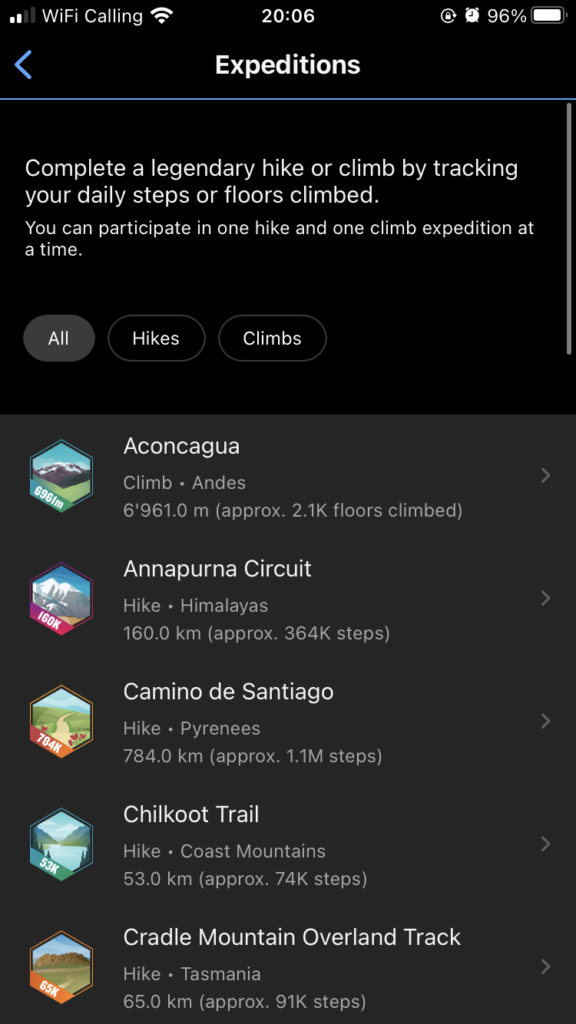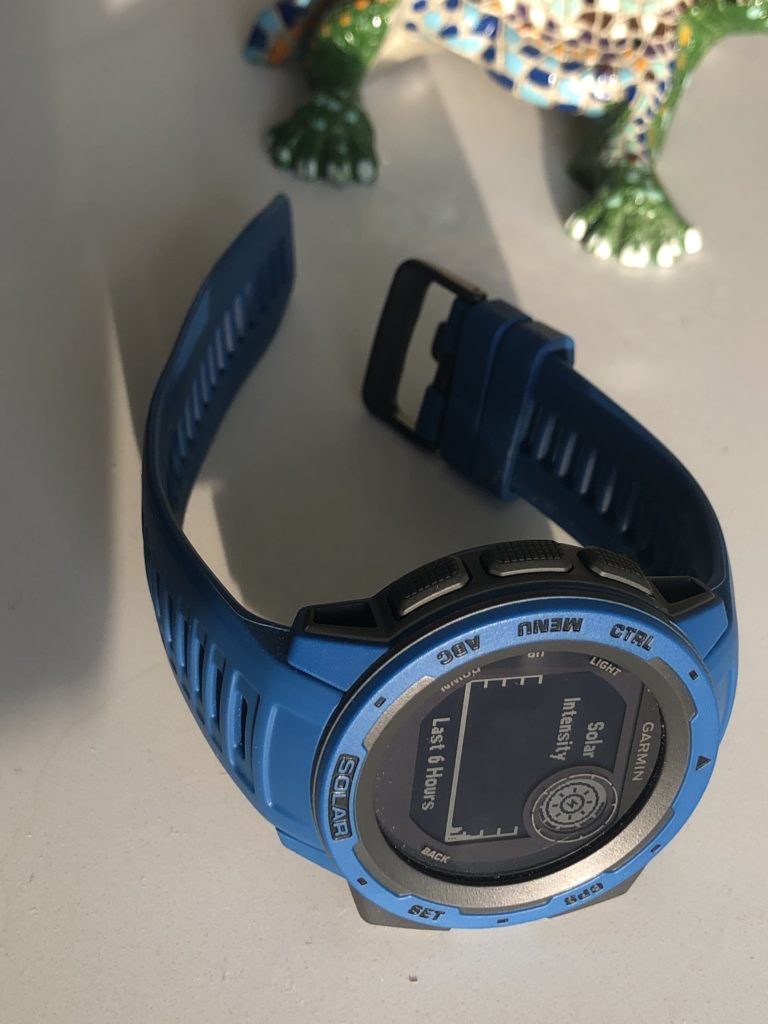Garmin Expedition Challenges
Garmin have had challenges for years. Most of them have been about distance, or vertical climbing. Now they have new Expedition challenges. Each expedition is named after an expedition or adventure by the same name.

The Camino De Santiago challenge is a challenge to walk 784 kilometres. The Denali challenge is to climb 6190m. There are two Mont Blanc Challenges. The Mont Blanc challenge is to climb 4808 metres whilst the Mont Blanc Circular (Tour Du Mont Blanc is to walk 160 kilometres.
Due to my character I have chosen to take on the Appalachian Trail challenge. It’s 3500 kilometres of walking, approximately 4.9 million steps. So far I have completed just 17.5 kilometres of that challenge. I have walked four million four hundred and twenty three thousand steps in the last year with an average of twelve thousand six hundred per day.
In theory the challenge will take me more than a year to complete, if it wants me to walk and run the distance. If I can cycle part of it then I will complete this goal within the year.
Climbing and Stepping
At the time of writing this blog post it is possible to take on one climbing challenge at the same time as taking on one stepping challenge. Both progress bars are shown together. With climbing the progress is shown in metres, and for distance it is shown in kilometres.
Pacer Challenges
If you want to try these challenges without paying for a Garmin device Pacer has offered such challenges for years now. You pay 29 CHF per year, and you can try the Camino De Santiago and other challenges. These are based on walking distance rather than height gain.
With Garmin you get a progress bar but with pacer you get your progress shown on a map, alongside everyone else trying the same challenge at the same time. You see how you overtake or keep up with them.
A Month to Completion
I would complete most of the walking challenges within a month, except for the AT and the Camino. The climbing challenges would take me a few weeks at the moment, but if I hike in the mountains in summer then I can reach those goals within three or four hikes, depending on goals.
Frustrations
These challenges count floors climbed and steps taken, rather than distance. This means that you need to walk or run for your efforts to count. Cycling will not count. In a few weeks or months we could find that they add cycling and other challenges, as people work their way through what is already around.
Another frustration is that you can’t save the progress in one challenge, to complete another challenge, before resuming the last. The Camino and AT will take two months to over a year to complete. This means that other challenges will not be possible for that extended amount of time.
Privacy
Due to these challenges being step based, or floor climbing based, you can preserve your privacy. There is no need to track with a GPS because steps are enough. Whether you have a 96 CHF Forerunner 45S (because it’s white and less popular) or a 1200 CHF Fenix or other you’re equal.


